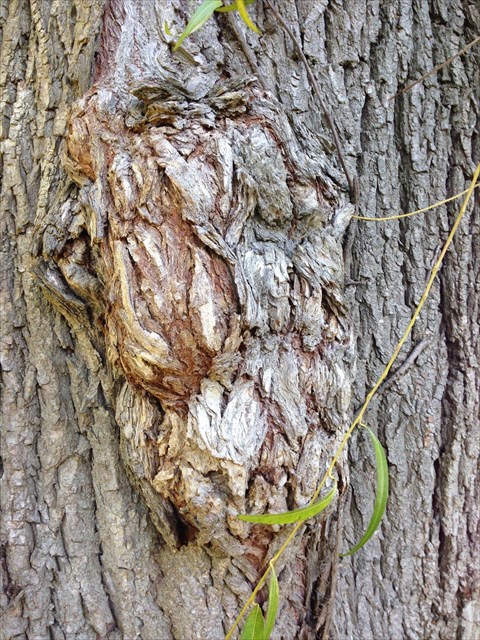Weeping Willow #2 Traditional Cache
-
Difficulty:
-

-
Terrain:
-

Size:  (micro)
(micro)
Please note Use of geocaching.com services is subject to the terms and conditions
in our disclaimer.
Weeping Willow #2 is to show you these fabulous trees. For more information about willows, go to
GC6P4DR_weeping-willow.

Weeping Willow Tree Facts
Weeping willow tree facts may be divided into two sections: facts about the plants and their cultivation, and facts about willows in literature, legend, folklore and music.

Weeping Willow Tree Cultivation Facts
There are more than 400 species of weeping willow trees, with most found in the Northern Hemisphere. Weeping willows cross with one another so easily that new varieties constantly spring up, both in nature and in cultivation.
Willows can be either trees or shrubs, depending upon the plant. In arctic and alpine areas, willows grow so low to the ground they are called creeping shrubs, but most willows grow to be 40 or more feet tall.
Growing Tips
Weeping willow trees are fast growing. They easily grow ten feet per year, and dominate the landscape. Their rounded, drooping branches give the tree a distinctive shape. Willows like standing water, and will clear up troublesome spots in the landscape prone to pools, puddles and floods. They also like to grow near ponds, streams and lakes.Weeping willows aren't fussy about their soil type, and they're very adaptive. While they prefer moist, cool conditions, they can tolerate some drought. They're a great choice to create an oasis of shade, if you have space to grow these gentle giants.

Most willows have pretty, green foliage and long, thin leaves. In the fall, the color ranges from a light yellow-green shade to a pretty blue color, depending upon the type. Trees lose their leaves in the fall, and are ideal to create summertime shade.
Willow Products
Weeping willow trees are used to create many useful items ranging from sports equipment to medicine.
Willow Wood
Stump your friends with trivia questions about willow trees. Willow wood is used to make many items including:
-
Cricket bats
-
Boxes
-
Furniture
-
Flutes
-
Whistles
-
Broom handles
-
Fish traps
Willow Trees as Medicine
Willow trees produce an abundant, milky sap. Within the sap is a substance called salicylic acid. In 1763, a British minister named Edward Stone did experiments on willow sap and identified and isolated salicylic acid. The acid caused too much stomach upset to be widely used until 1897 when a chemist named Felix Hoffman created a synthetic version which was gentle on the stomach. His company, Bayer, produced his invention as the first aspirin.

Willows in Art and Literature
Willows are literally used for art. Artists' sketching charcoal is often made from processed willow bark and trees.
Willows are symbolic of death thanks to their weeping form. If you look carefully at paintings and pictures from the Victorian era, you can sometimes spot a funeral painting, or artwork commemorating the death of someone, by the weeping willow tree and other symbols in the picture.

In literature, the most famous literary reference to the willow is perhaps William Shakespeare's Willow Song in Othello. Desdemona, the heroine of the play, sings the song in her despair. You can hear an example and read the musical score and words on Digital Tradition. Many composers have set this song to music, but the version on Digital Tradition is one of the oldest. The earliest written record of The Willow Song is from 1583 and was written for the lute, a stringed instrument like a guitar but with a much softer sound. Shakespeare uses the symbolism of the willow again in Hamlet, when doomed Ophelia breaks willow branches and tosses them into the river where she eventually drowns herself. Willows are referenced also in Twelfth Night.
If you're a J.K. Rowling fan, you'll note the willow is also an important character in the Harry Potter book series. The Whomping Willow is a tree with attitude that lives on the Hogwarts grounds and guards the entrance to a tunnel leading to the Shrieking Shack, where the character of Professor Lupin goes when he turns into a werewolf. .
The cache is a tied in, camoed, "micro" pill bottle, that you have to push hard to open and close. Please BYOP and put everything back exactly as and where you found it.
Additional Hints
(No hints available.)